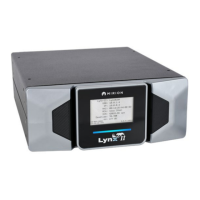Acquisition Modes and Acquisition Units
Lynx II DSA User's Manual – 7096089 5
Acquisition Modes and Acquisition Units
Note:
As described below, memory groups are not supported in the web browser
interface. They are only available through the Genie interface. However, if
Compare Spectra is checked in Preferences | Miscellaneous the spectrum
from Memory group 2 will overlay Memory group 1 in the web client interface
when Combined Adv Coincidence, Combined Adv Anti-Coincidence, or Dual
Loss Free Counting (DLFC) mode is enabled. To view separately or in more
detail, please use other applications like Genie-2000 which supports displaying
multiple Memory groups.
The Lynx II supports several acquisition modes:
PHA Mode
The PHA (Pulse Height Analysis) mode acquires energy-correlated data. Each channel,
defined as an energy window, is incremented by one count for each event that falls
within the window, producing a spectrum that correlates the number of energy events as
a function of their amplitude. The energy resolution of the spectrum (number of
channels) is determined by the Input Size setting. Its range is from 256 to 32768
channels.
Input #1 must be set for PHA mode. Acquisition can be directed into either of two
memory groups. The memory groups are identical in size. Each group can store the
spectrum data and the acquisition times independent of the other group.
Spectrum data and acquisition times are stored in persistent memory, meaning that
cycling power to the Lynx II will stop any acquisition in progress but will not lose data
already accumulated.
Spectrum data is cleared by the Lynx II when changing acquisition modes for Input #1.
DLFC Mode
The DLFC (Dual Loss Free Counting) mode of operation allows real time acquisition of
events and will produce two PHA-type spectra. One spectrum contains live time
corrected counts, and the other produces the normal uncorrected counts. Memory group
1 displays the corrected spectrum. Memory group 2 displays the uncorrected spectrum.
Input #1 must be set for DLFC mode. Acquisition is automatically directed into both
memory groups. The memory groups are identical in size. Acquisition Real times for
both groups are identical when in DLFC mode.
MCS Preset Mode
The MCS (Multichannel Scaling) mode acquires time-correlated data. Each channel is
sequentially allocated a dwell time (a specified time period) for accumulating counts
until all the memory has been addressed.
Input #2 must be set for MCS mode. Acquisition can be directed into either of two
memory groups. The memory groups are identical in size. Each group can store the
spectrum data and the elapsed sweeps independent of the other group

